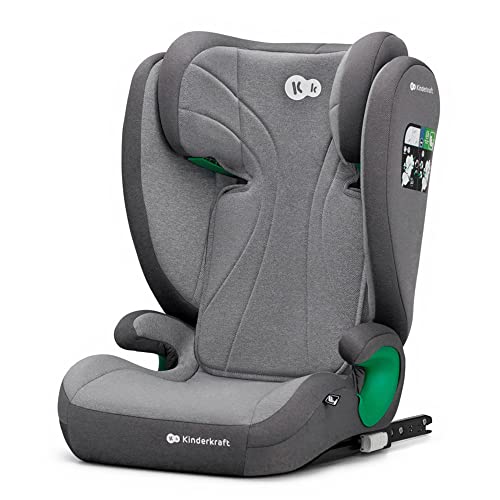5 Laws That Will Help The Pram To Stroller Industry
Transitioning from Pram to Stroller: A Comprehensive Guide for Parents
Navigating the world of baby equipment can be overwhelming for brand-new parents, specifically when it comes to picking in between prams and strollers. Both serve essential functions, but they are created for different requirements and phases of a kid's development. This short article aims to notify parents about the shift from prams to strollers, describing the advantages and factors to consider while offering practical ideas.
Comprehending Prams and Strollers
Before diving into their distinctions, it's essential to understand what constitutes a pram and a stroller.
Prams:
A pram, short for perambulator, is typically created for babies approximately around 6 months old. It includes a flat, cushioned sleeping area and is primarily intended for carrying extremely children. Prams are developed for convenience and safety, as newborns require to lie flat to support their spinal column and organs.
Strollers:
Strollers, or pushchairs, are designed for somewhat older children who can stay up unaided. They can be found in various styles and setups, from light-weight umbrella strollers to heavier-duty designs appropriate for rough terrains. Strollers are more flexible and easier to steer in crowded areas, making them a popular option for active households.
Benefits of Transitioning from Pram to Stroller
Increased Mobility and Convenience
Strollers are generally lighter and more compact than prams, making them easier to steer through shops, public transportation, and crowded locations. Many strollers can fold easily, permitting hassle-free storage.Adaptability for Different Activities
Modern strollers frequently come with numerous setups and can accommodate various activities, including running, outdoor experiences, and shopping journeys. They can also adjust to fit children of different ages and weights.Enhanced Child Comfort and Safety
Numerous strollers now come geared up with sophisticated security functions, such as five-point harnesses and reclining seats, guaranteeing that older babies and toddlers remain comfortable and safe throughout trips.Cost-efficient Solution
Rather than acquiring both a pram and a stroller, households can buy a premium stroller that meets the requirements of their growing kid, possibly saving money in the long run.
When to Make the Transition
The transition from a pram to a stroller typically happens when the child reaches around 6 to seven months of age or when they can sit up unassisted. However, numerous aspects can influence this transition, consisting of:
- Child's Development: If the child shows indications of wanting to explore their environments, it may be time to change to a stroller.
- Family Lifestyle: Active families might require a stroller quicker to accommodate getaways and travel.
- Comfort: Observe the kid's comfort level. If they appear cramped in a pram or are ending up being more active, it's time to consider a stroller.
Choosing the Right Stroller
Selecting the ideal stroller needs cautious consideration of several factors:
Factor
Description
Security Features
Look for tough construction, reliable brakes, and harness systems.
Weight and Foldability
Pick a light-weight stroller that is simple to fold and transfer.
Age Appropriateness
Make sure the stroller is suited for your kid's age, weight, and height.
Maneuverability
Test how quickly the stroller moves and turns, particularly in crowded areas.
Storage Space
Think about the storage capability underneath the stroller and the size when folded.
Adjustability
Search for strollers with adjustable features, such as seat recline and handle height.
FAQs about Transitioning from Pram to Stroller
**Q: Is it essential to switch to a stroller?A: While it's not compulsory, changing to a stroller typically offers more versatility and ease for both moms and dad and child as they grow. Q: What features need to I focus on
**in a stroller?A: Prioritize security features, weight, foldability, and storage capability based on your way of life and activities with your kid. Baby Prams Pushchairs : Can I utilize a stroller for newborns?A: Some strollers can accommodate baby car seats or
have flat reclining seats, making them suitable for
newborns. Constantly examine the manufacturer's standards. Q: How can I guarantee my child is comfortable in a stroller?A: Look for strollers with cushioned seats, multiple recline positions, and adjustable leg rests to accommodate your child's convenience. Q: What are the very best types of strollers available?A: Popular types consist of umbrella strollers, jogging strollers, travel system strollers, and convertible strollers, each dealing with differentneeds. Tips for a Smooth Transition Test Out Different Models: Before committing to a purchase, physically test various strollers to see which one fits both you and your kid best. Involve Your Child:****
If they are old enough, allow your
**kid to try out different strollers to see which they discover most comfortable. Read Reviews: Consider taking a look at online reviews and suggestions from other parents to much better inform your decision
. Plan for Storage and Transport: Factor in how the stroller will fit into your vehicle or home storage space to prevent future inconveniences.
**
*Evaluate Your Activities: Think about where and how you prepare to use the stroller— city locations may need a various type compared to rural or off-road settings. Transitioning from a pram to a stroller is an important turning point in a kid's life and a significant decision for parents. By comprehending the distinctions and
**benefits of each, moms and dads can make educated choices that will support their household's way of life and their kid's development. Equipped with the right details, parents can confidently navigate this transition and
guarantee that their child is safe, comfortable, and ready for all the experiences ahead.
 ********
********